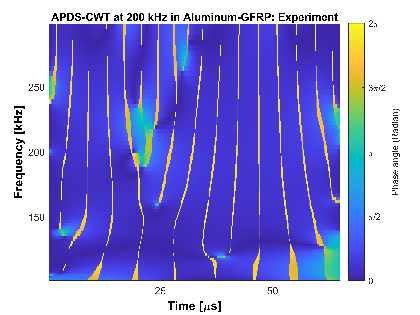Lamb waves occur in thin-walled structures in two wave modes—the symmetric and the antisymmetric mode. Their oscillation on the structures‘ surfaces is either in phase (symmetric) or shifted by a phase angle of π (antisymmetric). In this work, a method is developed by which to compare the surfaces’ oscillation phase relation to answer the question of whether fiber metal laminates show the same surface oscillation behavior as described for metals. The evaluation of time signals regarding the instantaneous phase angle is performed by using the continuous wavelet transformation and the short-time Fourier transformation. Numerical simulations utilizing the finite element method provide time signals from the top and bottom surface of different thin-walled structures of different material settings and configurations. The numerically obtained time signals are evaluated by the developed methods with respect to the oscillation phase. Subsequently, the oscillation phase is evaluated experimentally for the wave propagation in a fiber metal laminate. It is shown that the method based on the continuous wavelet transformation is suitable for the evaluation of oscillation phase relations in time signals. Additionally, it is proven that fiber metal laminates show only two phase relations, which indicates the occurrence of Lamb waves.
L. Rittmeier, N. Rauter, A. Mikhaylenko, R. Lammering, M. Sinapius,
The Guided Ultrasonic Wave Oscillation Phase Relation Between the Surfaces of Plate-like Structures of Different Material Settings
Acoustics 2023, 5, 136–164 [Link]

